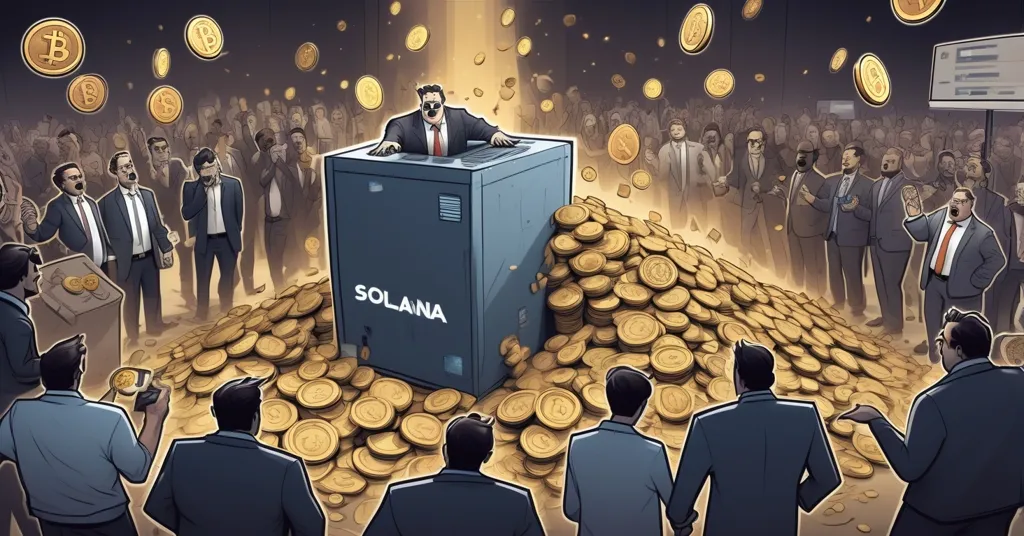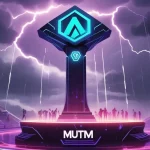Pump.fun Withdraws $436.5M in USDC, PUMP Token Crashes 24% Amid Community Fury

Pump.fun Pulls $436.5M in USDC: PUMP Token Crashes 24% Amid Backlash
Pump.fun, a Solana-based meme coin launchpad, is under fire after withdrawing a staggering $436.5 million in USDC since October 15, in what looks like a massive cash-out operation. As the PUMP token nosedives nearly 24% in a single week, the crypto community is up in arms over the lack of transparency and reinvestment, raising serious questions about the project’s priorities.
- Huge Cash-Out: Pump.fun moves $436.5M USDC through Kraken and Circle since mid-October.
- Token Collapse: PUMP token slumps 24% in a week, trading at $0.0026, below private sale value.
- Community Rage: Users blast the team for no airdrops or incentives despite massive earnings.
- Future Uncertainty: Can Pump.fun recover trust, or is this the start of a deeper decline?
Unpacking the Massive USDC Withdrawal
Let’s cut through the noise and get to the facts. On-chain data—transactions recorded on the blockchain, a public ledger visible to anyone—reveals that Pump.fun has shifted $436.5 million in USDC, a stablecoin pegged to the U.S. dollar, since October 15. According to crypto analyst EmberCN and blockchain intelligence platforms like Arkham and Lookonchain, 405 million USDC was deposited into Kraken, a major cryptocurrency exchange, while 466 million USDC moved from Kraken to Circle, the company behind USDC, over the past week. For newcomers, stablecoins like USDC are used in crypto to maintain value stability, often for trading or cashing out to fiat currency. This kind of movement screams cash-out, and the timing couldn’t be worse for investors.
Digging into the backstory, these funds are likely tied to a June private sale of PUMP tokens to institutional buyers, which reportedly raised $500 million in under 12 minutes during a July initial coin offering (ICO). An ICO is a fundraising method where projects sell tokens to early backers to fund growth, often at a discount. But instead of reinvesting into the platform, it appears the Pump.fun team is funneling proceeds out, as detailed in a recent report about Pump.fun’s massive $436.5M USDC withdrawal. Historical data adds more context: between May 2024 and August 2025, the project sold 4.19 million Solana (SOL), the native token of the Solana blockchain, worth around $757 million. Of that, $41.64 million was sold directly on-chain, with $715.5 million deposited into Kraken. Solana, for those unfamiliar, is a high-speed, low-cost blockchain popular for meme coins and decentralized apps (dApps), competing with networks like Ethereum. These numbers paint a clear picture: Pump.fun is swimming in cash, but none of it seems to be trickling down to users.
PUMP Token Takes a Brutal Hit
While the team moves millions, the PUMP token is in freefall. Data from CoinMarketCap shows a 22.77% drop over the past week, with an additional 3.97% decline in the last 24 hours, leaving it trading at a measly $0.0026. That’s below the private sale price of $0.004, meaning early investors are underwater, and retail holders are stuck with losses. Meme coins, for the uninitiated, are speculative assets often fueled by internet hype and community momentum—think Dogecoin or Shiba Inu. They can skyrocket overnight but crash just as fast when trust or interest fades. Right now, PUMP is bleeding both, and the massive USDC withdrawal is a glaring reason why. When a project’s team appears to prioritize profit over platform health, investors understandably panic—and the price reflects it.
Community Outrage: No Rewards, No Trust
The backlash from the crypto community has been relentless, and it’s not hard to see why. On social media platforms like X, users are venting frustration over Pump.fun’s apparent disregard for its base. One user summed up the sentiment bluntly:
“No airdrop, no marketing, no incentives.”
Another took direct aim at founder Alon, accusing the team of self-interest:
“Q4 will be the best quarter for Pump.fun team and nobody else.”
These aren’t just idle complaints. Pump.fun has reportedly earned over a billion dollars in the past year through token launch fees and other revenue streams. Yet, there’s been no sign of airdrops—free token distributions to reward loyal users—or other incentives common in the crypto space to keep communities engaged. For a meme coin launchpad, where user participation drives success, this feels like a slap in the face. Trust is the currency of decentralized projects, especially in meme coin ecosystems where hype is everything. Ignoring the community while cashing out millions isn’t just tone-deaf; it’s a recipe for disaster.
Beyond individual voices, the broader sentiment on X shows a trend of disillusionment. Many point out that other Solana-based launchpads or meme coin projects at least attempt to maintain goodwill through rewards or transparent communication. Pump.fun’s approach? Crickets. Their official X account hasn’t posted an update in over a week, leaving users to speculate and simmer in discontent. In a space built on the ethos of decentralization, where there’s no central authority to hold accountable, silence during a controversy of this scale isn’t just a misstep—it’s a betrayal.
Failed Innovation: Mayhem Mode Flops
Compounding the frustration, Pump.fun’s recent attempt to innovate with “Mayhem Mode” has fallen flat on its face. This AI-driven feature was pitched as a way to gamify or enhance token launches on the platform, potentially making it easier or more exciting to create new meme coins. The reality? A negligible uptick in activity. According to The Block, daily token launches rose from 17,300 to just 17,800—a measly 3% bump that hardly justifies the hype. For context, meme coin launchpads like Pump.fun let anyone spin up a token with minimal barriers, often resulting in a flood of projects, most of which are forgettable or outright scams. An AI boost could have streamlined the process or added unique value, but this underwhelming rollout suggests the team might be out of touch with what users actually want or need. If you’re going to tout innovation, it better deliver—otherwise, it’s just another empty promise.
The Bigger Picture: Meme Coins and Solana’s Wild West
Let’s zoom out and look at the broader context. The Solana blockchain has become a hotbed for meme coin mania in 2024, thanks to its fast transactions and low fees, which make it ideal for speculative projects. From viral tokens like BONK to countless others launched daily, Solana’s ecosystem thrives on chaos and experimentation. Pump.fun carved a niche as a go-to platform for creators and speculators alike, but this controversy highlights the darker side of the meme coin craze. Massive cash-outs like this echo the vibes of rug pulls—scenarios where developers drain funds and abandon a project—though there’s no direct evidence of that here. Still, the trust erosion is real, and it’s a stark reminder that decentralization cuts both ways: it offers freedom to innovate but also opens the door to unchecked greed when transparency is absent.
Bitcoin maximalists, who advocate for BTC as the only true decentralized money, might scoff at this mess, arguing that meme coins are a distracting sideshow from sound financial principles. And they’ve got a point—Bitcoin’s focus on scarcity and security stands in sharp contrast to the volatility and hype of Solana’s speculative tokens. But let’s not dismiss altcoins and experimental platforms outright. They test boundaries and fill niches that Bitcoin isn’t designed to address, driving adoption in their own chaotic way. The catch? When projects like Pump.fun prioritize personal gain over community value, they undermine the very revolution they claim to champion. Disruption is great, but not when it’s just a fancy word for screwing over the little guy.
Playing Devil’s Advocate: Is There a Legitimate Reason?
Before we completely torch Pump.fun, let’s entertain a counterpoint. It’s possible—though speculative—that these USDC withdrawals aren’t pure profit-taking. The funds could be tied to operational costs, paying off debts from scaling the platform, or even seeding a new venture under the Pump.fun umbrella. Running a blockchain-based launchpad isn’t cheap, especially with the infrastructure and legal hurdles in today’s crypto environment. Without direct communication from the team, we’re left guessing, but it’s worth considering that not every cash-out is a middle finger to users. That said, the scale of the movement and the silence around it make a benevolent explanation hard to swallow. If there’s a good reason, Pump.fun needs to step up and say it—fast.
Lessons for Crypto Investors
This saga offers some hard-earned wisdom for anyone navigating the crypto space, especially in the meme coin arena. First, vet the transparency of any project before investing—look for active communication, clear roadmaps, and a history of community engagement. Second, understand the risks of speculative assets like PUMP; they’re often driven by momentum, not fundamentals, and can collapse overnight. Third, don’t ignore red flags like massive fund movements without explanation. Blockchain data is public for a reason—use tools like Etherscan or Solscan to track what’s happening behind the scenes. Freedom in crypto comes with responsibility, and blind trust is a losing bet.
Key Takeaways and Questions on the Pump.fun Controversy
- What sparked Pump.fun’s $436.5 million USDC withdrawal?
The funds are likely tied to a June private sale of PUMP tokens, suggesting a team cash-out. While liquidity management isn’t uncommon, the scale and lack of clarity stand out as unusual. - Why has the PUMP token crashed 24% in a week?
The steep decline to $0.0026 reflects investor panic over the perceived cash-out, frustration with no community rewards, and the flop of the “Mayhem Mode” feature, all eroding trust. - How does community backlash impact Pump.fun’s future?
Persistent anger over being ignored could drive users away, critical for a meme coin launchpad. Without engagement, platform activity and long-term relevance are at serious risk. - What does the ‘Mayhem Mode’ failure reveal about Pump.fun?
The minimal boost in token launches shows a disconnect in innovation strategy. It suggests the team may not fully grasp user needs or market demands in the Solana meme coin space. - Is Pump.fun’s silence during this crisis a mistake?
Going quiet amid a $436.5M withdrawal and token crash fuels speculation and distrust. While it might be an attempt to avoid scrutiny, it’s likely deepening the damage to their reputation. - Can Pump.fun recover from this Solana meme coin controversy?
Recovery is possible if they prioritize transparency and community incentives, but the road is steep. Continued silence or missteps could mark the beginning of a steeper decline.
Pump.fun has the potential to remain a key player in Solana’s meme coin ecosystem, but only if it stops treating users like an afterthought. The crypto space thrives on trust and innovation, not secrecy and self-interest. As we champion decentralization and accelerated progress, let’s not forget that the community fuels this revolution. Pump.fun’s next move will speak louder than any blockchain transaction—and the clock is ticking faster than a Bitcoin halving.



